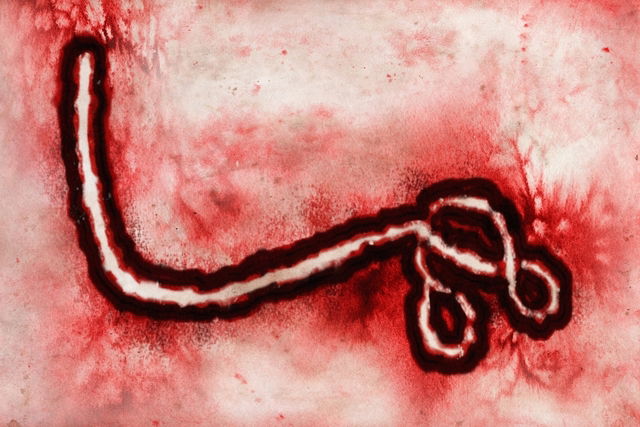Marburg virus infection is a rare disease that causes high-grade fever, muscular pain, and, in some cases, bleeding in many areas of the body, like the gums, eyes and nose.
This disease is more common in areas with bats of the Rousettus species, like Africa and the southern Asia, This infection is easily transmitted from person to person through contact of contaminated secretions, like blood, saliva and other body fluids.
Marburg virus is often compared to the Ebola virus because they both belong to the filovirus family and are transmitted similarly. They are both also associated with high mortality rates.

Common symptoms
The main symptoms of a Marburg virus are:
- High-grade fever, above 100.4ºF (or 38º C)
- Intense headache
- Muscular pain
- General malaise
- Persistent diarrhea
- Abdominal pain
- Frequent cramps
- Nausea and vomiting
- Confusion, aggression or easily irritability
- Extreme fatigue
Symptoms can emerge 2 to 22 days after initial contact with the virus. Symptoms evolve fairly quickly, and intense hemorrhaging can be noted to many areas of the body when it happens.
As a result of extreme blood loss, a Marburg virus infection is considered to be fatal. Many patients can die within 8 to 9 days of the first symptoms if the infection is left untreated.
Confirming a diagnosis
Symptoms of Marburg virus are similar to other infectious diseases, like typhoid, malaria and hemorrhagic illnesses. Therefore, the best way to confirm infection is through bloodwork that tests Marburg antibodies or antigens in the blood.
How it is transmitted
Originally, the Marburg virus was spread to humans after exposure to environments inhabited by Rousettus species bats. However, once a person becomes infected, they are able to contaminate another person through direct contact of infected bodily fluids, like saliva or blood.
Therefore, it is very important for infected patients to remain isolated and to avoid public areas. Patients should wear a mask and wash their hands frequently to prevent contaminating surfaces as well.
Transmission is possible as long as the virus is circulating in the blood. Therefore, it is important to take precautions even after treatment has completed, until bloodwork confirms the person is no longer infected.
How it is treated
There is no specific treament for Marburg virus. Patients are often prescribed rest and fluids (either oral or IV), as well as medications to address specific symptoms, like fever and muscle aches.
